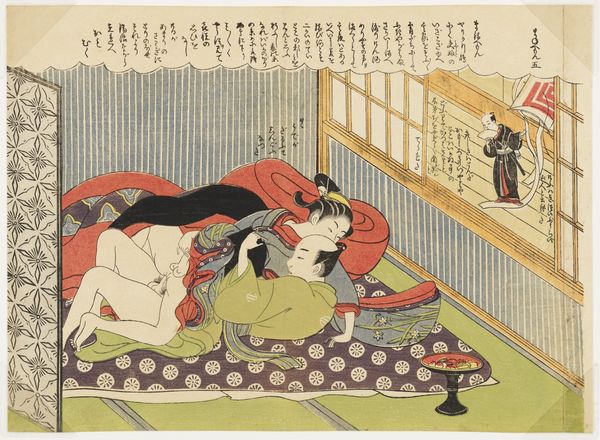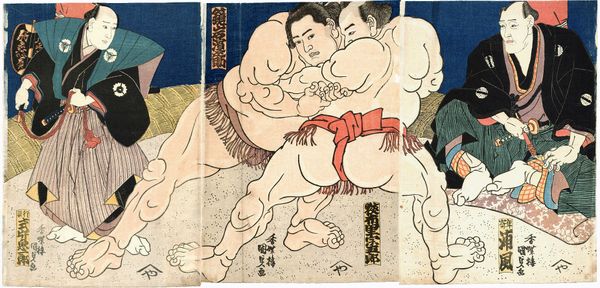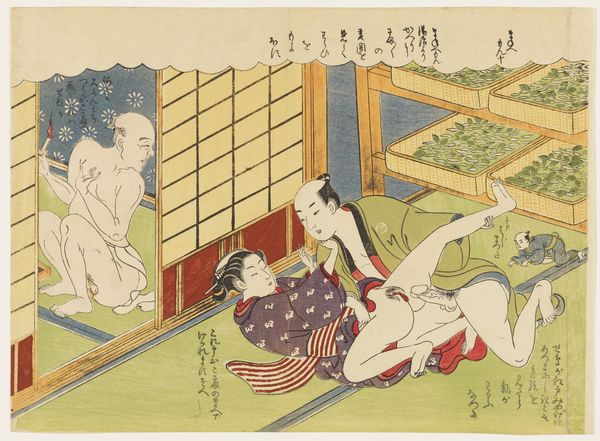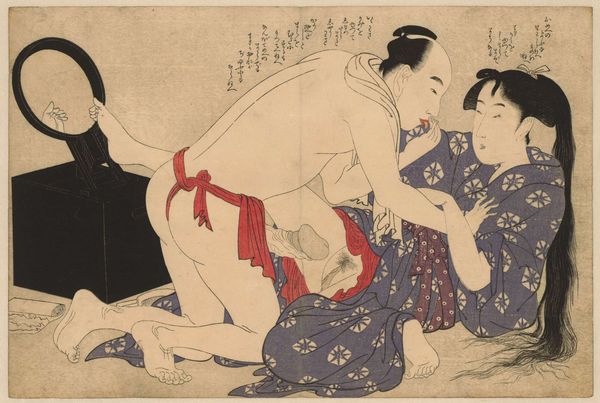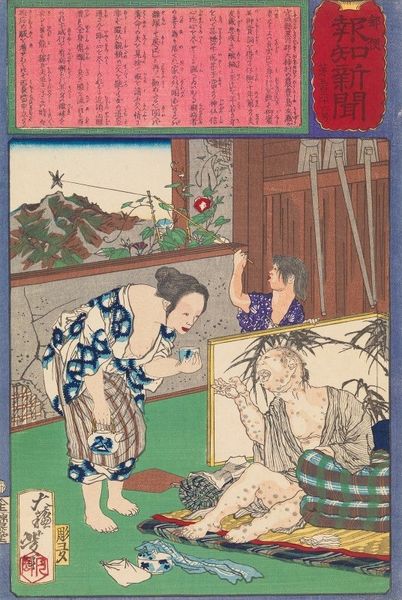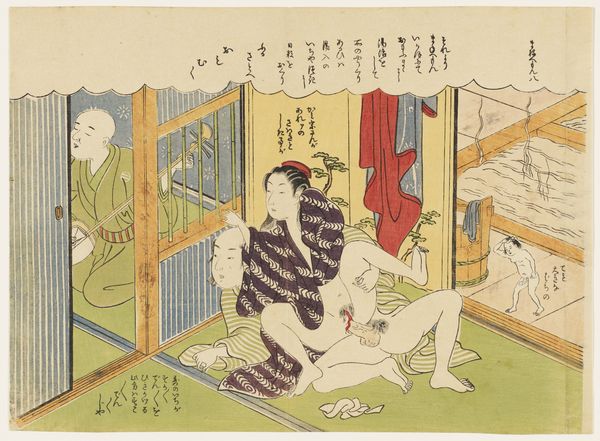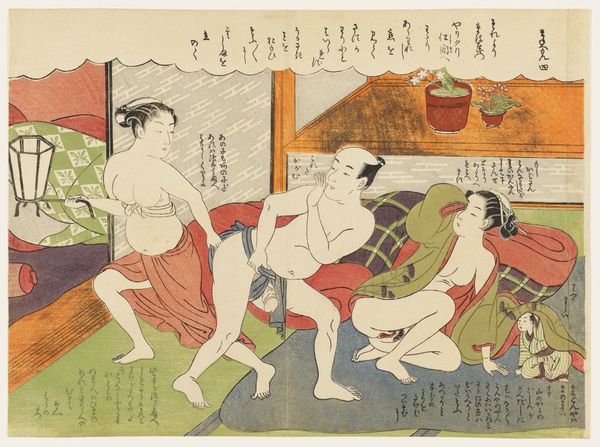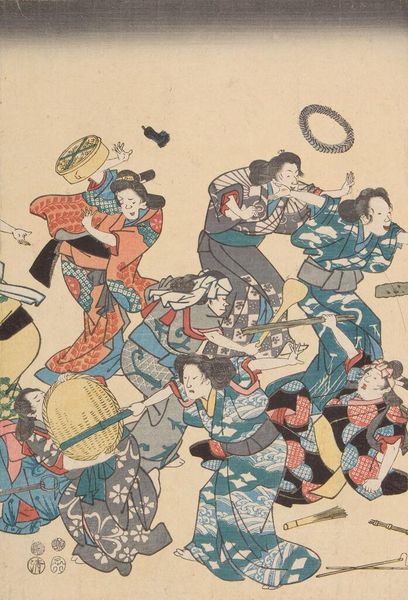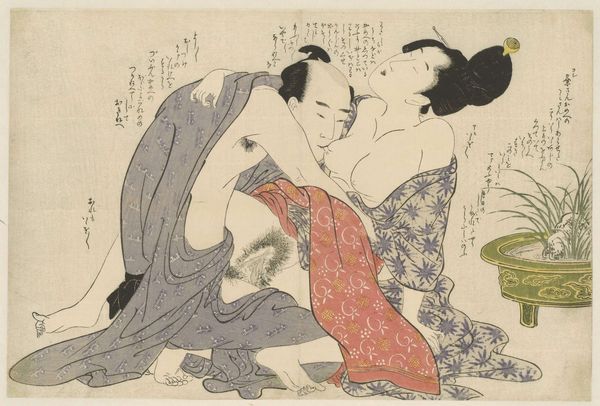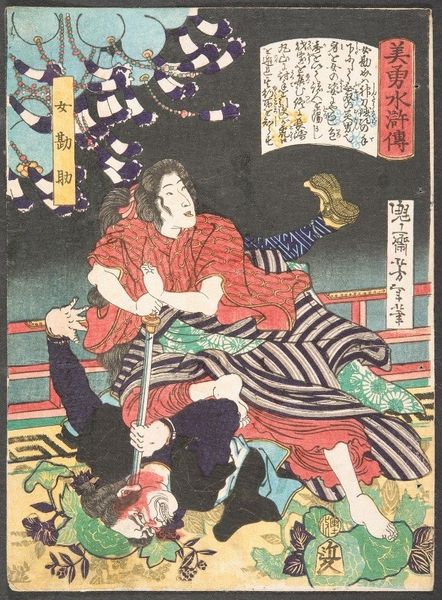
Copyright: Public Domain: Artvee
Editor: Yoshitoshi’s woodblock print, “Disobedient Wife and others from Moral Lessons of Good and Evil,” made around 1880, presents an arresting image. My initial reaction is simply one of visceral chaos. Curator: Indeed. Observe the tension between the figures and the objects; the composition employs a dynamic arrangement that unsettles any static reading. Note the flattened perspective and the stylized rendition of the characters which pulls us into its unique visual language. Editor: It's a riot of broken pottery, flailing limbs, and peculiar, floating figures surrounding the central struggle. The labor, and material conditions are visible – woodblock prints require precise craftsmanship, teamwork between the artist, block carver, and printer and its success depended on affordable accessibility. Curator: Certainly. Consider the formal arrangement – the layering of figures, their interlocking limbs. This constructs a deliberately disruptive surface, denying a seamless reading experience and demanding engagement with its disjointed form. The pastel colors contrast harshly with the evident aggression. Editor: The violence is almost slapstick, yet disturbing. Looking closer, those tiny, circling figures seem to wield miniature brooms. Perhaps commentary on societal clean-up after moral failings, pointing at the artist’s social commentary on women in that time period in Japan? Curator: The recurring circular motifs draw the eye repeatedly around the composition's perimeter. Notice how these contribute to the destabilization of any single focal point. They establish formal links which challenge the centrality and authority that are part of more orthodox compositions. Editor: I can almost hear the sound of splintering wood. It strikes me as an exercise in the possibilities and pressures around marriage, rendered visible through the artist's chosen materials. The creation process mirrors a complex collaboration within stringent production restraints and accessibility that reflects socio-economic tensions. Curator: Precisely! The work becomes a potent emblem of internal and societal tensions of 19th-century Japan. Ultimately, the print pushes against any conventional framework. Editor: Ultimately, this offers viewers the tools and incentive for new interpretations in printmaking and marital mores. Curator: The piece undeniably embodies innovation via calculated deviation from tradition.
Comments
No comments
Be the first to comment and join the conversation on the ultimate creative platform.
